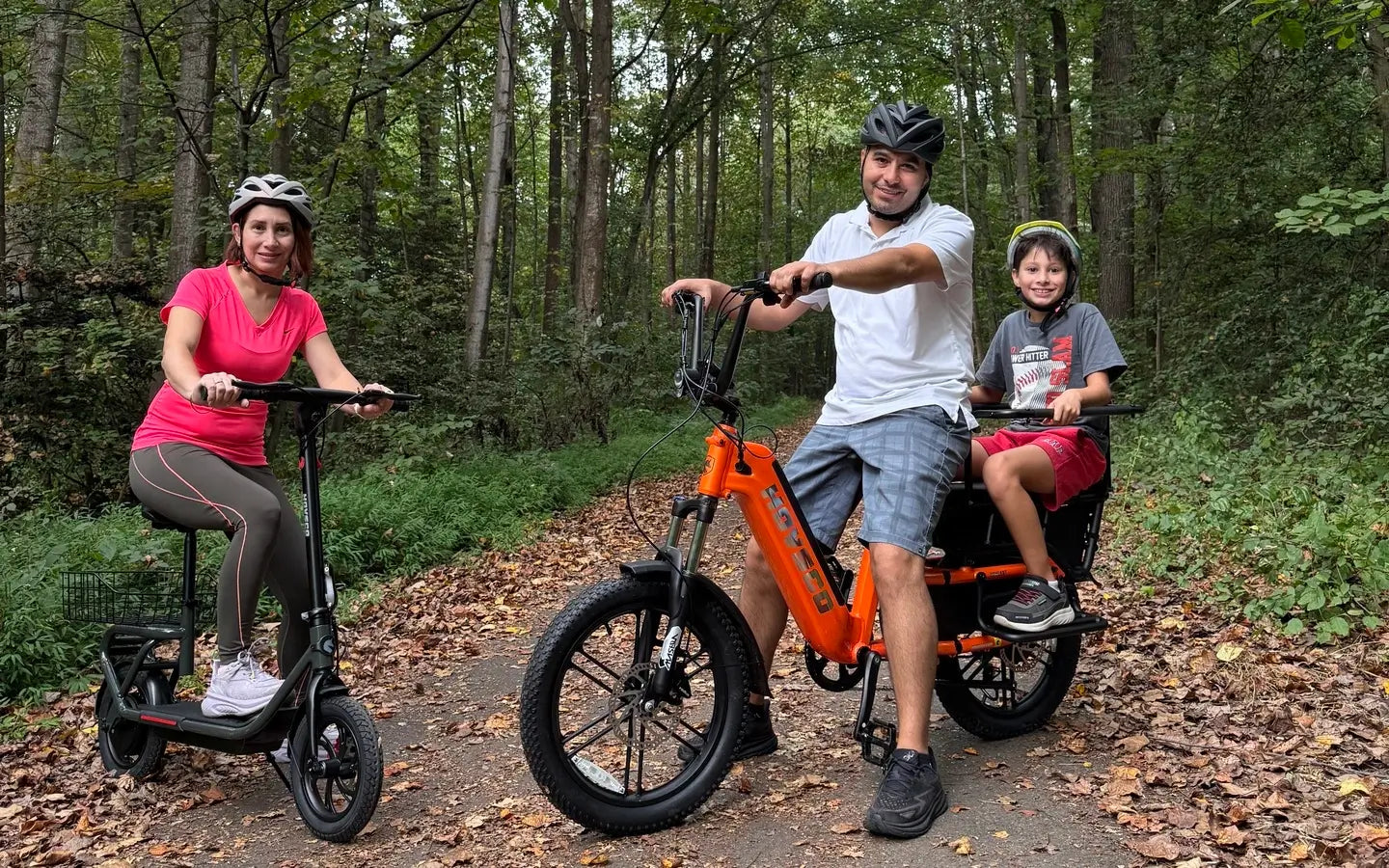
- by EO S
What Is a Cargo Bike and How Does It Work?
- by EO S
A cargo bike is a specially designed bicycle built to transport heavy loads or multiple passengers, featuring a robust frame and integrated storage platforms, typically positioned at the front or rear. Functionally similar to standard bikes, cargo bikes accommodate greater weight with reinforced structures and often include electric pedal assistance for easier handling and climbing.
Cargo bikes differ by load placement; front-loading cargo bikes feature a box or platform ahead of the rider with a front wheel positioned farther forward, while rear-loading "longtail" bikes have extended rear racks or seats. This design distributes weight more evenly, maintaining stability and maneuverability under heavy loads.
Front-loading cargo bikes use linkage or cable systems to connect handlebars to the front wheel, allowing the wheel to be further ahead yet responsive to steering inputs. Longtail bikes maintain traditional steering but have extended frames to balance cargo and rider weight comfortably.
E-cargo bikes incorporate motors and batteries providing pedal assist, reducing rider effort when carrying substantial loads or climbing hills. Pedal-assist systems amplify human power dynamically, enhancing speed and range while maintaining eco-friendly transportation.
Cargo Bike Load Distribution Comparison Chart
| Cargo Bike Type | Load Location | Structural Features | Typical Load Capacity |
|---|---|---|---|
| Front-Loading | Front platform | Extended front wheelbase, linkage | Up to 250 kg |
| Longtail (Rear-Loading) | Rear rack/seat | Extended rear frame, rear suspension | Up to 300 kg |
Their capacity to carry groceries, pets, children, tools, and deliveries without motor fuel reduces emissions and defrays traffic congestion. Cargo bikes provide an alternative to cars for short trips, fostering healthier lifestyles and more sustainable cities.
Cargo bikes boast lower operational costs, no fuel requirements, and ease of parking. Their size and maneuverability afford quick navigation through urban congestion, and their electric assist variants reduce physical strain, making them practical for families and businesses.
HOVSCO brings innovative designs balancing performance and aesthetics tailored for diverse users—from daily commuters and families to delivery professionals. Focused on safety, utility, and style, HOVSCO integrates cutting-edge components to optimize load capacity, riding comfort, and battery efficiency.
“HOVSCO believes in the transformative power of cargo bikes, blending advanced electric assist technology with durable, ergonomic designs. Our mission is to revolutionize urban mobility, making heavy load transport greener and more accessible. We’re committed to continuous innovation that redefines how people interact with their environment through practical, reliable cycling solutions.” — Product Manager, HOVSCO
Select front-loading bikes for heavy or bulky loads needing low placement and easy loading access. Longtails excel for families transporting children or versatile cargo behind the rider with a compact footprint suited for longer rides and better balance at speed.
Consider load type, frequency, and rider experience when selecting a cargo bike. Choose front-loading or longtail style based on load and handling preference. Opt for electric-assist models for easier pedaling, especially uphill. HOVSCO offers versatile cargo bikes blending innovation, quality, and style suitable for varied urban and family needs.
Q: What is the maximum load a cargo bike can carry?
A: Typical cargo bikes carry between 150-300kg depending on type and design.
Q: Are electric cargo bikes suitable for daily commuting?
A: Yes, their pedal assist and cargo capacity make them ideal for urban commutes.
Q: What are the main differences between front-loading and longtail cargo bikes?
A: Front-loading places cargo upfront with specialized steering; longtails extend rear racks for passengers or cargo.
Q: Can cargo bikes replace cars for family transport?
A: For short trips, many families find cargo bikes a practical and greener alternative.
Q: How does HOVSCO enhance cargo bike designs?
A: By incorporating cutting-edge technologies and ergonomic designs for safety, comfort, and utility.
Share:
Which Are the Best Cycling Computers for eBikes in 2025?
How To Read An Accurate Cargo Ebike Review?